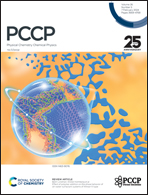Design of a new Li-rich Mn-based ternary cathode material based on the Ni, Co, and Mn action mechanism
Abstract
Rechargeable lithium-ion batteries, as the most advanced energy storage devices currently available, urgently require the development of cathode materials with high capacity, large specific energy, and fast charge/discharge performance to satisfy the continuous technological innovation. Here, a Li-rich Mn-based ternary cathode material Li7/6Nil/6Co1/6Mn1/2O2 is designed, and the geometrical structure, electronic properties, and thermodynamic properties of this material are investigated employing the first-principles method. Six layered structure models are established by adjusting the ratio of Ni, Co, and Mn elements, and the effects of various elements on the material properties are evaluated. Based on the performance of Ni, Co, and Mn in the structure, Li1.2Ni0.15Co0.1Mn0.55O2 features favorable electrical conductivity, thermal conductivity, and excellent stability. This material obtained through co-precipitation using a high temperature solid phase synthesis presents a high actual capacity (245 mA h g−1) and superior cycling performance (the capacity retention rate of the material is 84% after 60 cycles at 0.2C). This effort discusses the Li-rich Mn-based cathode materials in terms of the structural basis, reaction mechanism, and application exploration, which are valuable for guiding their theoretical design, optimization modification, and industrial application.



 Please wait while we load your content...
Please wait while we load your content...